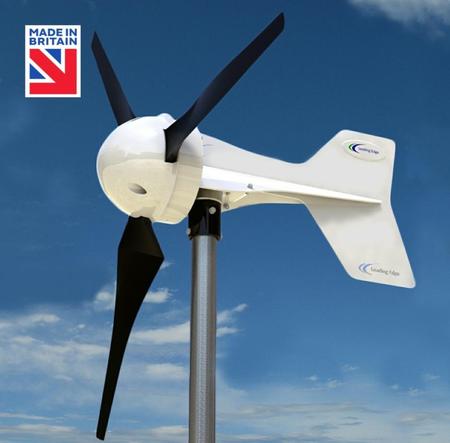When the North Dakota Agricultural Weather Network (NDAWN) was looking to power its remote weather stations with a wind turbine robust enough to cope with the harsh weather conditions in this part of North America, it turned to the Leading Edge LE-300 wind turbine.
This small wind turbine is warranted to withstand storm force winds up to 27m/s, 100km/h and available in black to prevent the build-up of rime ice.
Rugged horizontal wind turbine
The LE-300 turbines have withstood hours of sustained windspeeds of 60 km/h and gusts of 100 km/h over a number of years now - experience has shown us it is a very well engineered product,James Hyde, Instrumentation Specialist at North Dakota Agricultural Weather Network
The mesonet of 174 weather stations across North Dakota, Minnesota, and Eastern Montana run by NDAWN experience extreme weather conditions. Temperatures range from -40°C to +40°C with winter storms bringing hours of sustained windspeeds of 60 km/h and gusts of 100 km/h.
“The LE-300 turbines have withstood hours of this kind of sustained wind loading over a number of years now - experience has shown us it is a very well engineered product,” said James Hyde, Instrumentation Specialist at North Dakota Agricultural Weather Network. “The wind turbines are also able to handle summer storms’ punching gusts – within seconds winds can rapidly change direction at speeds of 120 km/h. We know this because we are measuring the winds only meters from the turbine at near turbine height.”
“Another state-wide off-grid network - non-weather related - with similar power issues also tried wind turbines, this time from another brand, only for them to fail after a year or two. I often see their turbines sitting on the side of the road with blades missing or barely turning because their bearings have seized or stators blown up. Our Leading Edge turbines have kept going without any issues or serious maintenance in the same conditions.”
The LE-300 wind turbines are powering meteorological sensors, dataloggers, cellular modems, cameras and heaters with a 12W continuous load. As well as a wind turbine, each weather station is powered by 180W of solar. However, solar irradiation is much lower during a North Dakota winter. At times, there’s no direct sunlight for 2 weeks or so.
On top of this North Dakota's bitter cold winters impact battery performance and can make charging off low amperage difficult. The LE-300 turbines complement the climate here as winter cloudy skies also bring wind. A bonus is that the way the systems are configured, any excess energy when the batteries are fully charged gets dumped as heat. This keeps the batteries warmer and operating in a more ideal charge/discharge range, improving the lifespan of the batteries.
Commenting on his experiences dealing with Leading Edge, James said “Leading Edge has always been responsive to our needs, working with us to figure out how to incorporate their products into our existing power management system. From equipment recommendations to voltage adjustments, their support is greatly appreciated. Leading Edge was open and honest about the product’s capabilities and delivery timelines, an important consideration for us as we’re transcontinental.”
Products Featured in This Case Study
Tell us about your project
Our Off-grid experts will come back with recommendations








